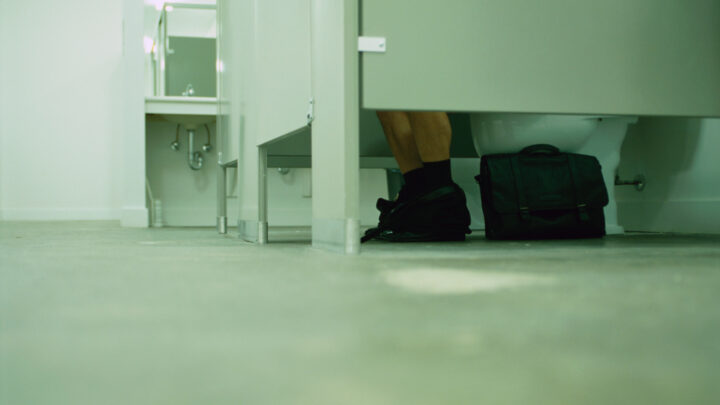“Many people tend to hover or even sit on top of the toilet seat, leading to splashing of urine and feces on the toilet seat,” she said.
“It’s not very likely that you contract a disease by directly sitting on the toilet seat, it is kind of gross to sit on other people’s feces or urine.”
In her video, she advocates for a two-step approach to toilet seat hygiene: wiping the seat and using a toilet seat cover before sitting down.
“I personally tend to wipe the toilet, put a toilet seat cover and then sit on the toilet,” Dr Desai said.
“The reason is if you hover on top of the toilet seat, you can actually cause a strain in your pelvic muscles and incomplete empty.
“So if you want to not only be sanitary but also protect your pelvic muscles, it’s probably better for you to sit on the toilet seat.”
She went on to say that “if all of us sat on the toilet seat using a toilet seat cover there would be less urine and feces on the toilet seat”.
She concludes with a straightforward hygiene rule: “My general rule — wipe it down, put a toilet seat cover.”
“If you flush the toilet with the lid up, a polluted plume of bacteria and water vapour just erupts out of the flushing toilet bowl,” he said.
“And some could even settle on your toothbrush!
“So if you flush with the toilet lid up, you could be brushing your teeth with toilet water.”
@drkarl Do you need scientific evidence to make your housemates flush with the toilet lid shut? Here you go 😎 #drkarl #drkarlkruszelnicki #science ♬ original sound – Dr Karl
Ending the video with a humorous note, Dr. Karl adds, “I guess that’s one way to get the males in your house to put the toilet lid down.”
In a world where hygiene awareness is paramount, these experts’ insights provide valuable tips for navigating public and private bathrooms. Whether it’s wiping down the seat or closing the lid before flushing, a few extra steps can go a long way in promoting a cleaner and healthier bathroom experience.
IMPORTANT LEGAL INFO This article is of a general nature and FYI only, because it doesn’t take into account your personal health requirements or existing medical conditions. That means it’s not personalised health advice and shouldn’t be relied upon as if it is. Before making a health-related decision, you should work out if the info is appropriate for your situation and get professional medical advice.

